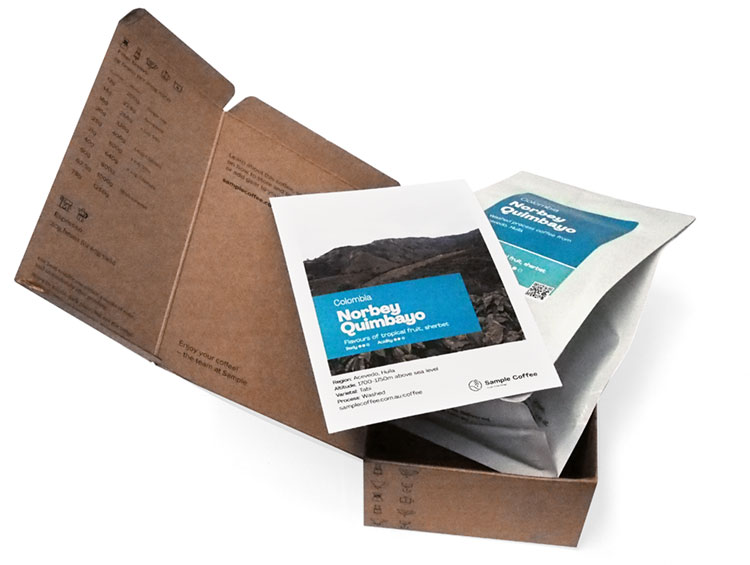-
Producer
-
Oliverio Naranjo
-
Country
- Colombia
-
Region
-
Los Alpes, Planadas, Tolima
-
Altitude
-
1700m above sea level
-
Variety
-
Process
-
Importer
-
Caravela
-
Body
-
Light
-
Acidity
-
Low
-
Tasting notes
-
Melon, apricot, crunchy red apple acidity
-
Roast style
Colombia
Oliverio Naranjo
This coffee comes from Oliverio Naranjo’s farm Finca El Cedral in Los Alpes, Tolima, Colombia.
We’ve been enjoying seeing more and more amazing quality coffees coming out of the Tolima region of Colombia.
Tolima's always had great promise: the combination of climate and altitude were right for high quality, and it's bordered by powerhouse coffee-growing regions like Huila and Cauca.
Until recently this was hampered by FARC guerrillas who were based in Planadas, making it difficult to work with farmers and complicating the export of coffee of crops. The Colombian government signed a peace treaty with the rebels in November last year, which we're hoping allows the region's farmers to trade easily with the rest of the world.
It's focused on the region of Antioquia rather than Tolima, but the New York Times recently had a photo essay about travel in Colombia's coffee belt that shows how beautiful the countryside is, and also touches on the FARC peace deal.
What does acidity mean?
If you think of Colombian coffee as rich and bold, Oliverio Naranjo's crop will be a change: light bodied, with low acidity and with some delicious fruit notes.
When we talk about acidity, we're talking about flavour and vibrancy that comes from types of acid that occur naturally in foods. The easiest example of this is biting into a green apple. This coffee has a red apple acidity which refers to malic acid that's in apple and rhubarb.
In others coffees you might taste citric acids (similar to limes, oranges and lemons), tartaric acids (like green grapes), or acetic acids (by itself a vinegary flavour, but in small amounts it's more like wine).
Learn everything about this coffee:
Ethical, traceable sourcing
This page has all the sourcing information (variety, process, region, story, importer, and more) that our importers share with us, and give us permission to use.
The transparency helps us talk confidently about the quality and background of our product, and it helps you know exactly what you’re buying.
Learn more:
Coffee page transparency legend
Our coffee philosophy
Our business approach
Fresh harvest coffee
We only source and roast coffee from each country’s latest harvest season (so the green coffee is never older than 1 year from the time of picking, processing and packing). This ensures the sensory qualities are always at their peak and unaffected by excessive ageing.
Roasted for espresso and filter (best enjoyed black)
Roast style: omni. Omni roasts are designed to brew and taste great both as espresso and filter. Our omni single origins generally sit on Agtron values in the ~70-60 value range. So, technically, they are somewhere in the lighter side of the medium spectrum.
Designed for espresso and filter brewing. Best enjoyed black.
Learn more:
Our Loring Kestrel S35 roaster
Our roasting style and approach
Best brewed within days 15-49 post-roast
The ‘fresh is best’ saying doesn’t apply to coffee (contrary to popular belief). Waiting before opening and brewing your bag of whole coffee beans helps develop peak flavour and acidity.
But heads up: if you buy pre-ground coffee, brew it as soon as possible.
Learn more:
Our recommended brewing window
Try our custom brewing recipes
Our recipes and ratios are tailored to our coffee sourcing and roasting styles, bringing the best flavour and feel out of each coffee.
For pour over, immersion, and other filter brewing styles, check our brew guides.
For our espresso single origins, we recommend a coffee:yield ratio of 1:3:
- Dose: 20g ground coffee
- Yield: 60g espresso
- Total brew time: ~24-28 seconds
This is just a starting point! We encourage you to experiment, taste, and adjust to find the recipe that you enjoy the most.
Learn more:
Our espresso brew guide (single origin)
Brewing ratio calculator
Packaging and sustainability
- Bags: ABA-certified home compostable (AS 5810-2010)
- Labels: recyclable
- Valves (only on +250g bags): general waste
- Box and tape (online orders): recyclable
Learn more:
Our packaging
Variety
Caturra variety
Caturra is a natural mutation of Bourbon that was originally discovered in Brazil in 1937, considered to be the first naturally occurring mutation ever discovered.
The location
Coffee from Colombia
Colombia is one of the largest coffee producers in the world and benefits greatly from having one of the most unique and complex set of micro-climates of all coffee producing nations.
The Tolima region of Colombia
The word ‘Tolima’ comes from the local indigenous language and means a “river of snow or cloud”.
Farm processes
Washed process
Machines are used to remove the flesh from the coffee cherry before being fermented in water, washed again, and finally sun dried. This process tends to result in more distinct, cleaner flavours.

Subscribe to a world of coffee
Discover a new single origin coffee from Sample every 1-5 weeks with no delivery fees.
No up-front purchase, and you can pause, cancel, or change plans at any time.
Available to order online this week:

Ethiopia Bekele Gemeda
Flavours of mandarin, white peach, mango
Body Acidity
Washed Ethiopian Heirloom
November 2024 harvest
Roasted omni for filter and espresso
Ethiopia Bekele Gemeda online
Colombia Carlos Imbachi Pink Bourbon
Flavours of pear, jasmine, sugarcane
Body Acidity
Washed Pink Bourbon
February 2025 harvest
Roasted omni for filter and espresso
Colombia Carlos Imbachi Pink Bourbon online
Nicaragua Guillermo Montenegro
Flavours of plum, nectarine, shortbread
Body Acidity
Washed Caturra
March 2025 harvest
Roasted omni for filter and espresso
Nicaragua Guillermo Montenegro online
Kenya Karindundu Aa
Flavours of orange marmalade, grapefruit, Yunnan red tea
Body Acidity
Washed Batian, SL28, SL34, Ruiru 11
Roasted omni for filter and espresso
Kenya Karindundu Aa online